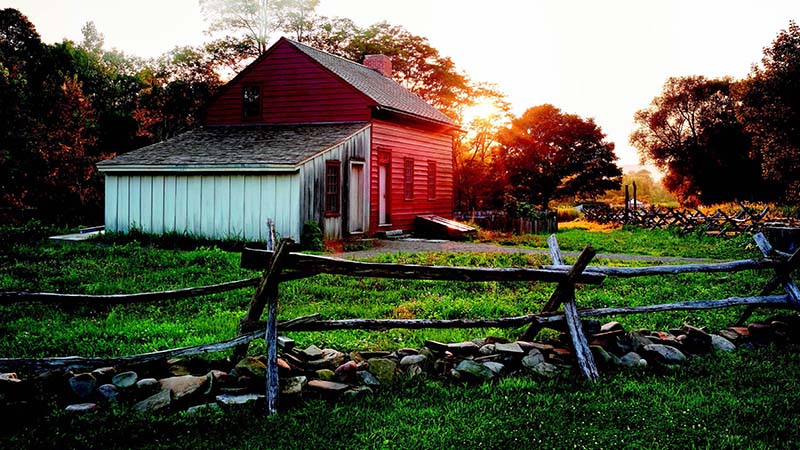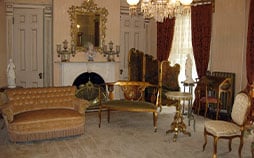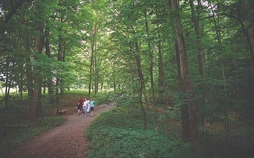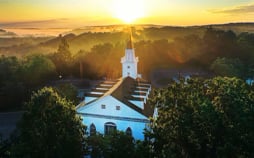Surprised, Inspired, and Immersed
The first time I toured the Beehive House, one room took my breath away. That room, like many other blessings from God, surprised me and then inspired me.
December 2020

Elders Orson Pratt and Joseph F. Smith took an eastbound train from Utah on September 3, 1878. One day earlier, President John Taylor and Elders Wilford Woodruff and George Q. Cannon had set them apart “to take a mission to the States, to gather up records and data relative to the early history of the Church.”[1] Over the next month, they would travel the country. One of their objectives was to see, and purchase if possible, original manuscripts of latter-day scripture.
The assignment given to Elders Pratt and Smith, Apostles who worked in the Church Historian’s office, has been called a “fact-finding mission,”[2] and rightfully so. But they found more than facts. As they went from place to place, they visited sites of significant events in the Restoration of the gospel of Jesus Christ. Through these experiences, they strengthened their connection with the Church’s history and doctrine. They also strengthened their connection with God. Elder Smith wrote in his journal about their experience on the Hill Cumorah. He said that they “spent several hours meditating and praising God.” His “heart was filled even to tears and [he] rejoiced.”[3]
This kind of experience has never been reserved exclusively for people like Elders Pratt and Smith - prominent Church leaders with family connections to the sites. From the early days of the Church, Latter-day Saints of all backgrounds have found meaning and spiritual connection at these places. The sites have unifying power. They represent a spiritual heritage shared by all Latter-day Saints, from the newest convert to the President of the Church.
“It is good to look to the past to gain appreciation for the present and perspective for the future. It is good to look upon the virtues of those who have gone before, to gain strength for whatever lies ahead.”
- President Gordon B. Hinckley, “The Faith of the Pioneers,” Ensign, July 1984, 3
In April 2020, Russell M. Nelson, President of The Church of Jesus Christ of Latter-day Saints, shared some of these holy places in general conference. President Nelson taught from the Sacred Grove, the Smiths’ reconstructed log home near the Sacred Grove, and Joseph and Emma Smith’s reconstructed home near the Susquehanna River. From Zimbabwe to Peru, from Norway to the Philippines, Latter-day Saints felt the power of these places.
Your generosity leads to opportunities for hundreds of thousands of people - possibly millions - to feel what Elders Pratt and Smith more than 140 years ago. As visitors walk on sacred ground, in person or through technology, they can draw nearer to heaven. Emily and David Read, who recently visited several of the Church’s historic sites with their five children, said, “Visiting the Church’s historic sites changed each of us and increased our dedication to live the gospel and do all the Lord asks of us.”
1 Joseph F. Smith, journal, September 2, 1878, Church History Library, Salt Lake City; quoted in Reid L. Neilson and Mitchell K. Schaefer, “Excavating Early Mormon History: The 1878 History Fact-Finding Mission of Apostles Joseph F. Smith and Orson Pratt,” in Joseph F. Smith: Reflections on the Man and His Times, ed. Craig K. Manscill, Brian D. Reeves, Guy L. Dorius, and J. B. Haws (Provo, UT: Religious Studies Center; Salt Lake City: Deseret Book, 2013), 360–61.
2 Neilson and Schaefer, “Excavating Early Mormon History,” 359.
3 Joseph F. Smith, journal, Sept. 16, 1878; quoted in Neilson and Schaefer, “Excavating Early Mormon History,” 373.

The first time I toured the Beehive House, one room took my breath away. That room, like many other blessings from God, surprised me and then inspired me.

As Church members experience our sacred past, they grow in their faith in Jesus Christ and His gospel, get helpful answers to questions, and receive spiritual strength and perspective.

The Kirtland Temple, along with significant documents, artifacts, and historic buildings in Nauvoo, Illinois, are now owned by The Church of Jesus Christ of Latter-day Saints and offer insights into the Restoration